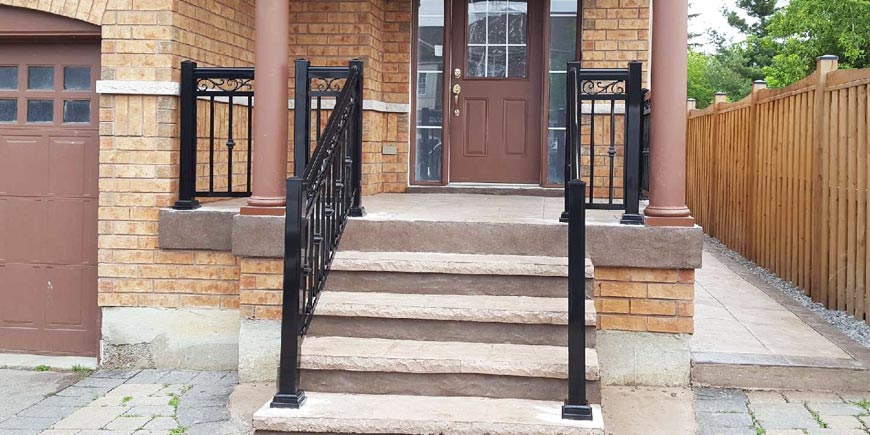Railings are the finishing touch that not only provides safety on balconies, decks, walkways, and other exterior areas but also add character and aesthetic appeal
A railing system determines how safe and accessible a building’s external environs are from a functional aspect. A well-designed railing system, on the other hand, adds to the aesthetic attractiveness of a building environment and influences how people interact with their surroundings.
Railing systems typically include railing frames—which can be constructed using wood, aluminum, wrought iron, steel, vinyl and other materials—along with infill.
A Range of Choices
A variety of railing infill options are available, providing flexibility to meet individual project requirements.
Stainless steel cable infill (horizontal and vertical) is frequently selected for residential and commercial spaces due to its minimalistic, streamlined look and ability to preserve the view. Highly durable, weather-resistant and low maintenance, cable infill can be paired with wood, metal, and composite-sleeved railings and works with a variety of architectural styles—from rustic to transitional to contemporary.
Like cable infill, clear or custom-tinted tempered glass panels offer a sleek look while also providing a visually unimpeded view. While this type of infill can create the illusion of no railing, it does require regular cleaning to ensure the clearest view possible. In addition, vertical picket infill is commonly used on exterior spaces and can provide an attractive railing solution, although it doesn’t provide the open aesthetic that cable or glass infill offer.
Newer Infill Options
Alternative infill solutions are growing in popularity as architects look for creative ways to personalize and differentiate spaces. Beyond being functional, infill can add an element of style that ties together a building’s exterior and the surrounding outdoor space.
Panel infill is available in a variety of materials and styles, including stainless steel wire mesh and laser-cut aluminum panels with powder-coated finishes. The infills can be mixed and matched with other infill options to create a custom look.
While panel infills can be installed within a custom-built frame, it’s generally recommended to specify an infill system that has been designed to fit together seamlessly. These systems have undergone extensive testing and calculations have already been performed on materials, composition and thickness to ensure code compliance. When using a frame that hasn’t been designed to work with the infills, the railing configuration may not meet code, including load and deflection requirements.
Integrated systems typically include a pre-engineered frame surrounded on all four sides with a low-profile aluminum channel, providing an aesthetically clean appearance with minimal transition from panel to frame. In the case of stainless steel wire mesh styles, components are fully isolated to prevent contact among dissimilar metals, which is critical for avoiding corrosion in harsh environments.
When considering stainless steel wire mesh panels, architects should look for options made of marine grade, corrosion-resistant 316-grade stainless steel for long-term durability.
Laser-cut pattern panel infills made of powder-coated aluminum are particularly versatile. Some manufacturers offer the ability to incorporate custom designs in their aluminum panels for a unique look. It’s important to ensure the panels meet AAMA 2604 specifications to help ensure corrosion resistance and color retention.
Simplifying the Specification Process
A growing number of manufacturers are providing helpful tools such as visualizers that enable architects to design a railing using pre-built templates or build a railing configuration from scratch. These online tools provide specifiers with a convenient way to explore a variety of different looks and then narrow down the options.
In addition, many manufacturers make specification documents and code compliance information available on their websites along with tools such as animations and videos. Moreover, most manufacturers have specification or sales teams that will work with architects to develop personalized solutions and address any specific project requirements and challenges.
Warranty Considerations
Warranties for infill can vary significantly, so architects should always make sure to confirm the warranty for the products they are specifying and what exactly is covered. It’s important to keep in mind also that railing systems must be installed properly to achieve optimal performance. Pre-engineered railing systems help to take the guesswork out of installation and—since all components are designed to work together—there is less chance for encountering issues due to non-compliance with warranties.
Due Diligence
With so many stylish and versatile railing infill options, the design possibilities are almost limitless. Make sure to learn as much as you can about each option and don’t be afraid to ask the manufacturer for assistance.

